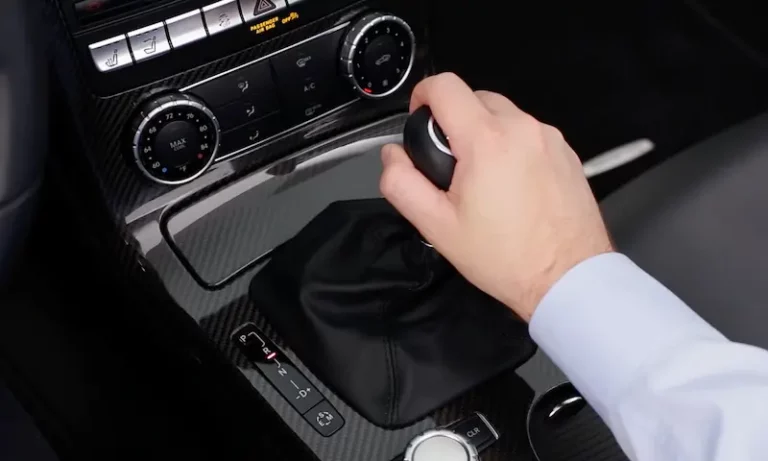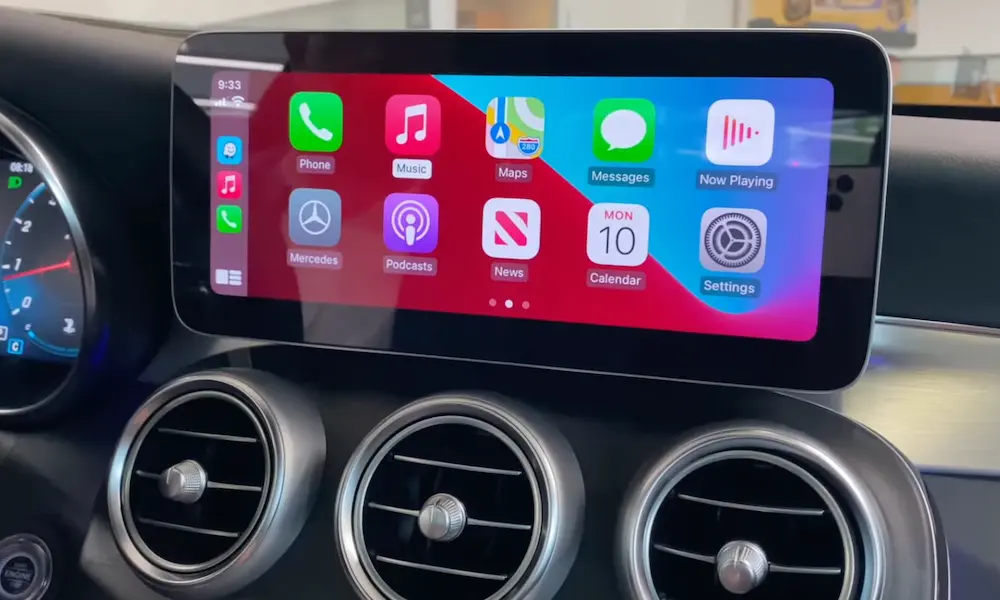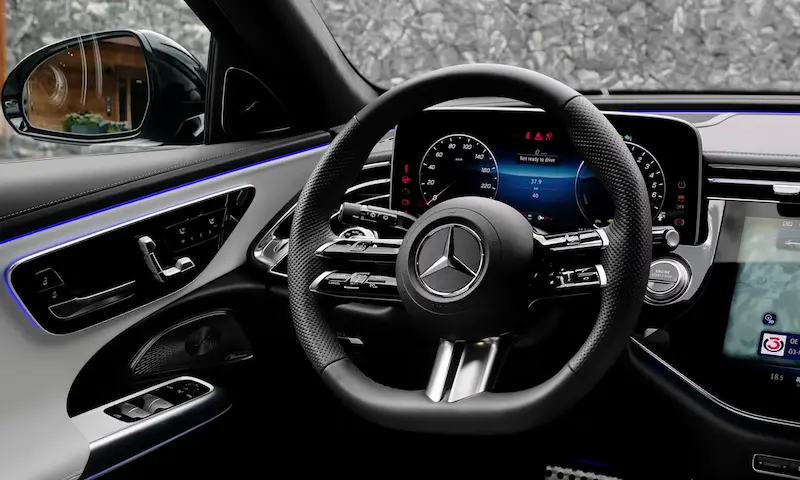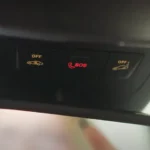Experiencing issues with your Mercedes automatic gearbox not changing gear can be frustrating and concerning. This problem may hinder your driving experience, but don’t worry, you’re not alone in facing such issues. Many Mercedes owners have come across similar situations, and there are several possible causes for this problem.
To better understand the issue, it’s essential to recognize the common reasons why your Mercedes may not be shifting gears as it should. This knowledge will empower you to take the necessary steps in identifying the root cause and look for appropriate solutions, ensuring a smooth and efficient drive with your beloved Mercedes.
Common Mercedes Automatic Gearbox Issues
Mercedes automatic gearboxes are generally reliable, but they can sometimes experience issues that affect their performance. Here are a few common problems you might encounter and how to address them.
One common issue is when the gearbox is stuck in park or stuck in gear. A possible cause for this could be a bad brake switch. The brake switch, located with your brake pedal, can cause a malfunction between the gear signal and the brake pedal when faulty, preventing you from shifting gears when stuck in park mode. To address this issue, you may need to replace the brake switch.
Another problem that Mercedes owners might face is the gear slipping, which indicates that the gearbox is not functioning properly. A failing valve body can cause this issue. If you suspect that your valve body is failing, you should seek the assistance of a qualified mechanic to diagnose and repair the problem.
Limp mode is another issue that may affect your Mercedes automatic gearbox. When your car enters limp mode, it limits the vehicle’s performance to protect the engine and transmission from further damage. If you experience limp mode, it is essential to have your vehicle checked by a professional to identify the underlying issue.
For some Mercedes automatic gearboxes, you can reset gear shifting problems. To do this, follow these steps:
- Turn the car key to the second position (position two) without engaging the pedals.
- While in position two, press and hold down the accelerator pedal (loud pedal) for either 5 or 10 seconds. Holding for a slightly longer duration is acceptable.
- Without releasing the accelerator pedal, turn off the car.
- Continue to hold the accelerator pedal for an additional 10 seconds after turning off the car.
- Release the accelerator pedal.
- Restart the car.
- Although the trip information on the dashboard may remain unchanged, the adaptive gearbox is now reset.
- As you start driving again, the gearbox will begin learning your driving habits from scratch.
Keep in mind that these are just a few examples of common Mercedes automatic gearbox issues. As always, it’s essential to consult with a qualified mechanic if you are experiencing problems with your gearbox to ensure a proper diagnosis and repair.
Possible Reasons Why Your Mercedes Is Not Changing Gear
Transmission Fluid Problems
One possible reason your Mercedes automatic gearbox is not changing gear could be due to transmission fluid problems. Low transmission fluid level or poor fluid quality can cause difficulty shifting gears. To address this issue, check the fluid level and condition, and consider replacing the fluid and filter if necessary. Keep an eye out for any signs of an oil leak, as it could indicate a need for further maintenance.
Faulty Electrical Components
Electrical components within your Mercedes, such as the transmission control unit, transmission control module, shifter module, and other sensors like the speed sensor, can play a crucial role in the gear changing process. Faulty or damaged components may cause issues with gear shifting. Check if the electrical connectors are in good condition and repair or replace any faulty components, including the engine control unit and the brake light switch, as needed.
Mechanical Failures
In some cases, mechanical failures within the automatic gearbox itself can cause difficulty shifting gears. Components such as the valve body, torque converter, conductor plate, solenoids, and other parts like seals and planetary gear sets need to be in proper working order for smooth gear changes. If you experience issues with your transmission oil pump or have trouble shifting into reverse, it may be an indication of a mechanical problem that requires professional attention.
Contamination Issues
Finally, contamination within the automatic transmission can also lead to issues with gear changes. Water contamination, old or dirty transmission fluid, and debris from worn components can affect the proper functioning of your Mercedes-Benz transmissions. Ensure that you perform regular maintenance and check the transmission fluid for any contaminates, replacing it as necessary.
Taking care of these potential problems will help ensure that your Mercedes automatic gearbox continues to function properly, allowing for smooth and efficient gear changes as you drive.
Identifying the Problem
Checking Fault Codes
To identify the issue with your Mercedes automatic gearbox not changing gears, you should start by checking the fault codes. You can do this using an OBD-II scanner, which will help you access the Transmission Control Module (TCM) or Transmission Control Unit (TCU) fault codes. These codes will provide you with valuable information about any potential problems with your gearbox.
Connect the OBD-II scanner to your car’s diagnostic port, typically found under the dashboard on the driver’s side. Once connected, the scanner will display any trouble codes related to the transmission. Make a note of these codes so you can look up their meanings and potential solutions later.
Observing the Car’s Behavior
Another important step in identifying the gearbox problem is observing your car’s behavior, particularly during gear shifts. Pay close attention to the RPMs when driving – if they spike excessively without the car shifting gears, it might indicate an issue.
While driving, experiment with using your car’s tiptronic function to manually change gears. If gears still don’t change or the car gets stuck in neutral, this can be a sign of a malfunction.
Keep track of the conditions under which the problem occurs, such as during certain weather conditions or specific driving situations. This information can help you narrow down the potential cause of the problem and guide your repair and maintenance efforts.
By carefully checking fault codes and monitoring your car’s behavior, you can pinpoint the root cause of your Mercedes automatic gearbox not changing gears. Armed with this information, you can confidently move forward with the necessary repairs to get your transmission working smoothly once again.
How To Repair Your Mercedes Gearbox
When your Mercedes automatic gearbox starts having trouble changing gears, it’s crucial to address the issue before it worsens. Here’s a guide to repairing your Mercedes gearbox, which includes seeking professional garage services, buying replacement parts, and essential maintenance.
Professional Garage Services
The first step for repairing a gearbox issue is to consult a professional garage. These experts can diagnose the issue, perform necessary repairs, and ensure your gearbox is back in perfect working condition. Taking your Mercedes to a certified garage ensures that experienced technicians will use specialized equipment to identify any potentially hidden problems.
Additionally, a professional garage can also help with routine maintenance, such as checking fluid levels, replacing filters, and adjusting any vacuum lines. Regular visits to a garage can prevent potential issues in the future, saving you time and money in the long run.
Buying Replacement Parts
If a repair requires replacing certain components, make sure to invest in genuine Mercedes parts. High-quality replacement parts will extend the life of your gearbox and maintain the performance you expect from your vehicle. You can purchase these parts directly from a Mercedes dealership or a reputable online retailer.
Remember to consult with the professional garage to ensure that the parts used in the repair are right for your specific gearbox model. Genuine Mercedes parts are guaranteed to fit and function seamlessly with your vehicle, ensuring proper function and long-lasting reliability.
Keeping your Mercedes gearbox in excellent working condition is paramount to getting the most out of your car. By seeking professional garage services and investing in high-quality replacement parts, you’ll be well on your way to maintaining a smooth and efficient gearbox. Make sure to prioritize regular maintenance to minimize potential gearbox issues and prolong the life of your vehicle.
Conclusion
When your Mercedes automatic gearbox doesn’t change gear, it’s essential to identify the cause. Possible reasons involve a bad brake switch, poor control parameters, or a malfunctioning throttle linkage. In some extreme cases, slipping clutch packs could be the culprit. To avoid further damage, consult a professional mechanic for a thorough inspection and necessary repairs. With their expertise, you’ll have your Mercedes running smoothly again in no time.












